Core stability training has been all the rage in the fitness field over the past decade, for good reason. Learning to move at the hips while keeping the spine stable is crucial for new lifters. While most lifters and trainers are well aware of simple core exercises that are properly suited for beginners, many aren’t well-versed in progressing these exercises to suit more advanced lifters. Too many lifters extend the duration of basic planking drills as their primary method of progressive overload, which builds strength endurance. But what about strength and power? A strong, powerful core is needed to stabilize the body during heavy lifting and explosive sporting actions.
In this article, I’ll go over some of the most effective core exercises that more advanced lifters can add to their libraries and discuss ways to make some of the classics a little more challenging.

The Core
Before I delve into exercises, let’s first discuss the core. The core refers to more than just the abs. It encompasses the entire musculature of the torso, including the abdominals, obliques, erectors, glutes, hip flexors, lats, adductors, and more. The core acts on the shoulders, scapulae, spine, pelvis, and hips. At the spine, it can produce, reduce, and resist spinal flexion, extension, lateral flexion, and rotation. It is responsible for transmitting forces from the upper body to lower body. Please read Strategies for Optimal Core Training Program Design for a comprehensive article on core training which I wrote with Brad Schoenfeld. As you can see, proper core training will require more than just a couple of sets of crunches or hanging leg raises!
Unfortunately, many lifters don’t train the core in its entirety, which leads to sub-optimal results. While the core doesn’t require a ton of extra attention, assuming a lifter is already performing squats, deadlifts, hip thrusts, chin ups, presses, and rows, additional exercises are indeed needed to fill gaps. To train the core completely, one must consider the joints in play, the possible actions at each joint, and the common force vectors the lifter is seeking to strengthen. When training core stability, you’re enhancing the body’s ability to resist movement, hence the exercises can be considered “anti-movement exercises.”
Exercises
Sumo stance band anti-rotation holds
The sumo stance band rotational hold trains the ability to resist rotation. Since the sumo stance is wider and has a bigger base of support, more weight can be used than in a traditional stance band rotational hold. You want to find the sweet spot where you’re going as heavy as possible without leaning or twisting during the set’s duration.
First, attach a band to an immovable object. Power racks are preferred, but machines work well too. We typically use a pro-mini or light long band (see Elitefts, Sorinex, or Rogue for bands), but the band you use will be dependent on your strength levels. You can use a lighter band and just walk out further for more resistance.
Take the free end of the band and grip it in both hands, double overhand.
Walk the band out until the desired amount of tension is reached, take a sumo stance, with knees slightly bent, in an athletic stance with good posture. Keep a fairly upright torso with the hands near the chest.
Keeping the spine in neutral, extend the arms straight out in front of you so that the elbows are fully extended and the hands are chest level. You should be out far enough that when you extend your arms, they make a 90 degree angle with the band.
This exercise may be done for time or reps. We typically do 2-3 sets of 10-20-second holds on each side 1-2x per week. Cable columns can also be used for this exercise. HERE is a video.
Loaded RKC planks
The RKC plank looks very similar to a normal plank, with a few subtle differences. In the RKC plank, the elbows can be further out in front, which lengthens the lever. The feet and arms can be closer together, which narrows the base of support. Finally, the pelvis is posteriorly tilted with a giant glute squeeze, which causes the anterior core, along with the glutes, to fire much harder.
We will place between one and four 45 lb plates on the low back of the lifter. Rather than attempt to hold for longer time, we attempt to use more load or alter technique so that the static hold is more challenging. Even with advanced lifters, 20 seconds is about the max time we’ll go for with this movement. We typically do 2-3 sets of 10-20-second holds 1-2x per week. HERE‘s a video (without the weight).
Hollow body holds
The best core exercises often seem overly simple, but when performed correctly, they are very challenging. This is definitely the case with the hollow body hold.
The hollow body hold trains anti-extension, and will be performed for time rather than reps. Again, 15-30 seconds for 2-3 sets 1-2x per week is sufficient to get an ideal training effect from these. HERE is a video you can watch (I miss my beard and mohawk!).

First, lie on your back with the legs straightened out and the arms extended overhead. From this supine position, you’ll elevate the legs and arms off the floor and press your low back into the ground, flattening out the lumbar spine and holding tension in the core. Make sure you elevate just enough so that your anterior core is really fighting the extension moment being created, if you go too high, you’ll make the exercise easier and cheat yourself on the benefits it provides. Dumbbells and ankle weights can be used to increase the difficulty of the exercise. HERE is a video you can watch (I miss my beard and mohawk!).
Loaded dead bugs
Another classic anti-extension core stability exercise is the dead bug. However, this drill is not challenging enough for the typical advanced lifter, so modifications are in order. Slowing the movement down and holding the bottom position while exhaling fully on each rep will increase the difficulty, but many lifters will move past this point quickly as well. When body weight is too easy, we load the movement up to achieve progressive overload.
Ankle weights may also be added to the lower extremities if they are available, but it’s typically the arms that get ‘too light’ first. Just 5-10 lbs will add enough difficulty for most lifters, but you can go heavier than this so long as you control the movement. You’ll set up for a regular dead bug holding a weight in each hand (dumbbells or plates may be used). Lower opposite arm and opposite leg to just above the ground, exhale and return to the start position before lowering the next pair of limbs.
The dead bug is one of those movements where it’s up to the lifter to make difficult. You can go through the motion without engaging the core very much, or it can be one of the most challenging anti-extension drills in your library. So make sure you’re staying tight throughout the movement, and do not let the spine hyperextend or the pelvis anteriorly rotate. We prefer to keep our lumbar spines flattened out on these, but a neutral spine and pelvis is preferred by many trainers. 2-3 sets of 5-10 reps on each side performed 1-2X/wk is recommended. HERE‘s a video.
Landmines
The landmine trains the torso’s ability to resist motion – the bar actually induces lateral flexion torque, rotation torque, and flexion torque on the spine, so the core has to work hard to remain stable. Not only is it a fantastic core exercise, it’s fun and jacks the heart rate up pretty high as well.
You’ll need to set up in front of a landmine or grappler unit, but if one is not available, a barbell stuck into a corner will suffice as well.
Pick up one end of the landmine either fist over fist or with an interlocked grip. How far away you stand will depend on your arm length and height. Once your grip is set, the forearms should make a 90 degree angle with the bar.
In an athletic stance, keeping the core engaged, extend the arms out in front but don’t lock them out completely. Drop the landmine down towards one hip without bending the elbows. While maintaining some distance from the landmine, return to the start position and drop to the other side.
The majority of the motion should take place at the shoulders. Remember, you’re trying to resist spinal motion, so keep the core braced and don’t let the weight control you. For variety, you can pivot and rotate around the bar (see HERE), and if you have a grappler, you may do them like THIS. If performing these, 2-3 sets of 10 reps on each side 1-2X/wk will suffice.
Ab wheel rollouts
The ab wheel rollout is a great progression once you’ve mastered planks and stability ball rollouts. The rollout trains anti-extension and may be progressed further by adding a band to the ab wheel.
First, kneel down on some type of padding (the Airex Balance pad works great for this). Take the ab wheel in both hands and center your body over it. Before descending, extend the hips, squeeze the glutes, and engage the core. This alignment should be kept throughout the movement.
To descend, think about sinking your hips to the ground as your arms extend forward – don’t envision reaching with the arms. Once you’ve hit the lowest point, pause for a second then, pull the arms back underneath the body until the start position is reached.
Make sure to not allow the low back to arch or the pelvis to anteriorly tilt during the movement. Another common mistake is allowing the hips to flex too much on the way up. This motor strategy utilizes the hip flexors to pull the body backward, but it’s not ideal. Think of this exercise as a moving RKC plank. We do 2-3 sets of 6-15 reps 1-2X/wk. HERE is a video for you to check out. If the kneeling version is too easy, try negatives from the standing position, as shown HERE. If this is too easy, be like Ross Enamait and do them one arm with a weighted vest HERE, or utilizing a ramp HERE, or pausing isometrically HERE.
Off bench oblique hold
The off bench oblique hold trains the body’s ability to resist lateral flexion. You can think of it as a loaded progression for the side plank.
Set up in a GHR laterally, with the bottom foot out in front and the top foot behind you. The GHR pad should be positioned at the side of the hip. Your hips and knees should be fully extended, the glutes should be tensed, and the torso should be completely straight. Grab a dumbbell with the bottom arm and return to neutral. Hold this position for the prescribed duration. 2-3 sets of 20-30 second holds once or twice a week is sufficient. You can also do these off of a standard bench. HERE is a video.
Suitcase hold
The suitcase hold is another anti-lateral flexion drill, and is very easy to set up. Simply place a dumbbell or kettlebell on a bench or step. Stand next to the weight so that it is at your side. Pick it up with the hand and stand tall. You want to keep the shoulder girdle engaged, spine neutral, and glutes squeezed throughout the duration. Make sure you don’t go so heavy that you have to lean or rest the weight on your side to get through it. Go heavy enough for a good challenge, but be able to maintain good alignment the entire time. A barbell can be used in a power rack to enable even heavier loading. 2-3 sets of 20-30 second holds once or twice a week is sufficient. HERE‘s a video.
Conclusion
I’ve provided you with some very challenging core stability exercises. The RKC plank, hollow body hold, dead bug, and ab wheel rollout will strengthen your anti-extension spinal stability strength. The off bench oblique hold and suitcase carry will strengthen your anti-lateral flexion spinal stability strength. And the sumo band anti-rotation hold and landmine will strengthen your anti-rotation spinal stability strength. Many of these exercises will strengthen the pelvic and hip musculature as they strengthen the spinal musculature since the movements require stability at all three body regions.
If you’re astute, you might be wondering about anti-flexion spinal stability strength. If you read this blog, then I’m assuming you already perform squats and deadlifts, in which case you’re very effectively strengthening spinal anti-flexion stability. A stronger core can improve performance and prevent injuries. If you’re an advanced lifter seeking challenging core stability drills, give the exercises mentioned in this article a try.

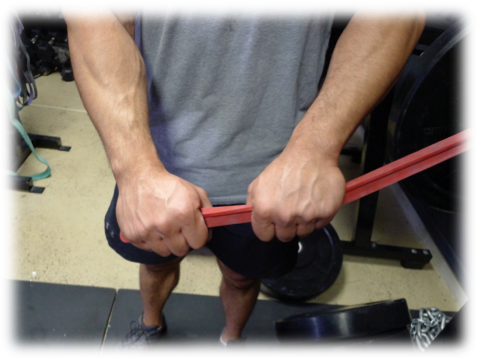

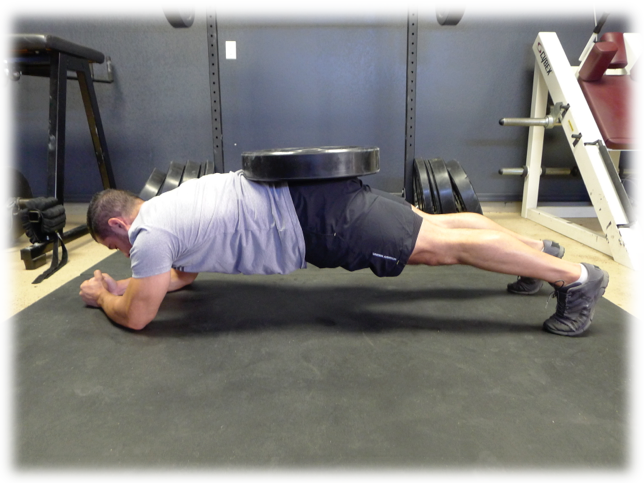
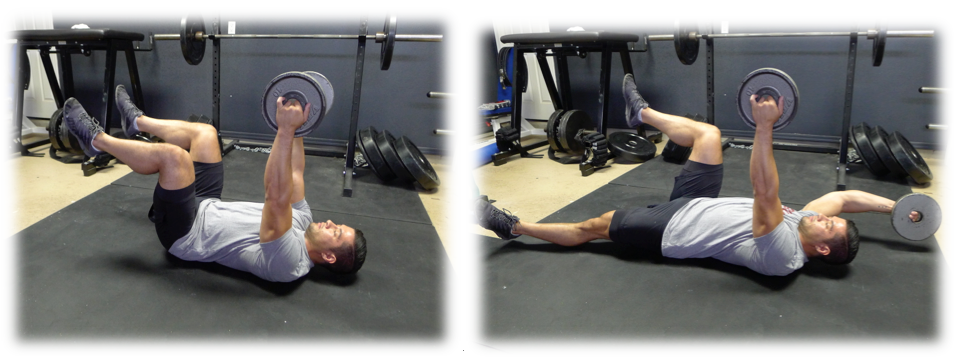

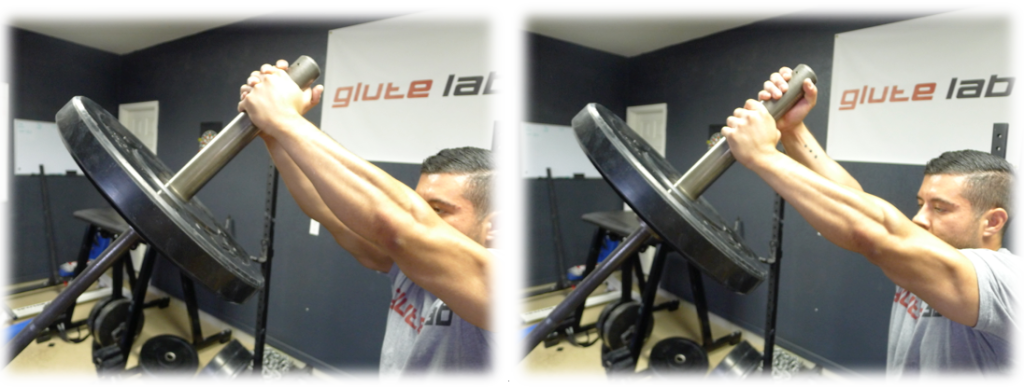

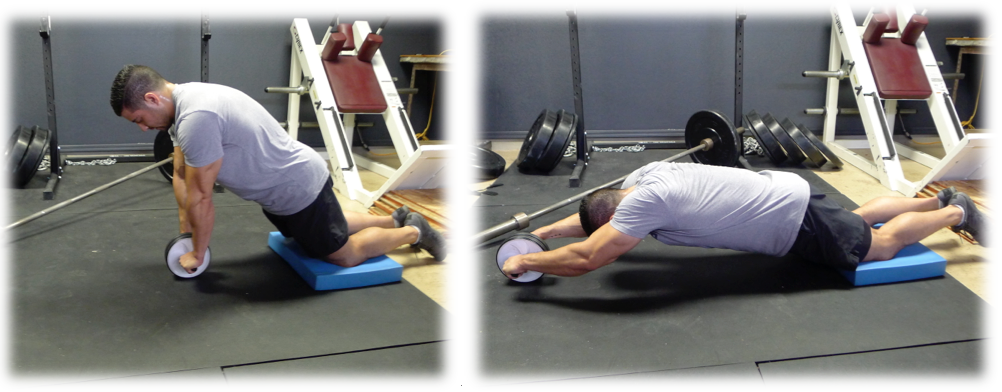
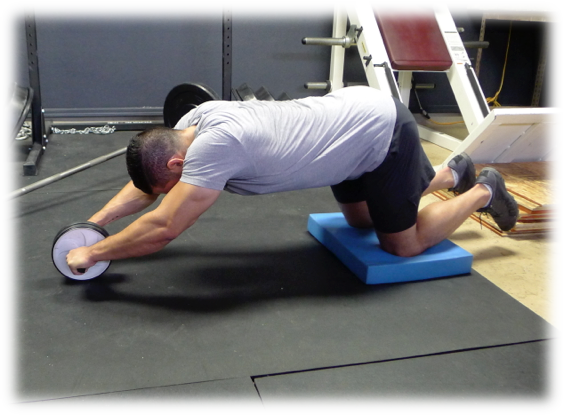

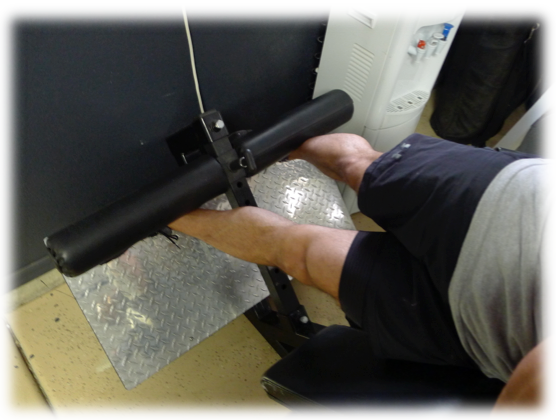






Interesting…any EMG studies on abs?
See here: http://www.t-nation.com/testosterone-magazine-627
Bret, don’t you have a new book coming out this month. I want to make sure I order it. Are you doing a presale? Thanks for this tweet. I’m revising some workouts now to include some of these terrific moves!
Like to do with my athletes: squat down, grab a 60 pounds dummbell, unilateral farmer walk for 20-30m !!! great obliques/core activation and very functional 🙂
Suitcase lift with a barbell is tricky to do..wont recommend for beginner 😛
Thx for good info once again !
good evening folks !
I agree Charles – it’s tricky. But I remember how surprised I was several years ago when I first did to find that the bar can balance in the hand even when holding onto 205 lbs. I assumed it would be teeter-tottering and rocking but it stayed put. It did sway from left to right from time to time though, which is why it can be tricky.
Good evening, Charles! Good stuff! Quick question and an idea.
Does 20-30m mean 20-30 meters, or 20-30 minutes? B/c the latter would be cruel and unusual, me thinks, lol!
Oh, and the idea is to do the 20-30 meters up a hill, or stairs. Your athletes will enjoy this variation!
I meant 20-30meters (sorry) ! dont worry haha !
Im not that kind of mad guy with athlete loll !!! Yes I migth try the upstairs variation one day ! thx
Have a nice day !
Interesting, but gym time is limited. When I read articles about supplemental work, I am really interested in:
Does a typical workout variation (including warm up) likely cover all the ‘core’ requirements?
Is there one particular exercise that yields such a huge bang for the buck that we should add it in / change what we’re doing?
Of the major lifts, are there any that benefit the core in ways that many do not realize (for example- do lunges work the obliques and/or abductors to build superior speed during cuts? Or- are chin ups the greatest ab builders compared to all other exercises combined?).
Cheers,
Alex
P.S. Under threat of torture, I would refuse to perform ‘dead bugs’ in public. Do not forget Dan John’s commandment, “don’t make me look stupid!”
I think it depends on the goal. If powerlifting strength is the goal, then I don’t think you need much anti-extension/anti-lateral flexion/anti-rotation strength (but you do need huge, insane amounts of anti-flexion strength. If speed/power/agility is the goal, then I don’t think you need much core stability either as the lower body produces most of the power. But if you’re a grappler, or a rugby player, or an American football player, then you need tons of core stability in every direction.
Great stuff, Bret!
Alex, no time for the Crock Pot? Here’s the microwave, a loaded jackknife:
Load the supine hollow body position with a 10-25-35 lb. plate in a pullover position. Arms straight but not locked, soft bend in the elbows. Right behind the ears. Legs are about 6-inches off the floor, and fully extended. Even point your toes. Hard posterior pelvic tilt, lumbar smashed into the ground.
Now do a jackknife under control bringing the arms and legs both up to vertical. Touch the plate to your shins. Under control back to hollow.
This is just cutting to the chase for the recommended :20 second high intensity beat down; it’s actually Exercise 6 in a progressive pullover ab complex that I devised. When run all the way through, the total time under tension will be about 2-min. You won’t want to do another round, and if you do, then you need to use a heavier plate on Round 1. 🙂
You’re a beast? Band the ankles and resist the hip flexion component as well. Abdominal murder. Still not a felony.
2-min. out of your training session. Walk over to your training log. Cross off “abs”.
At the end of your regular training session, go hit the heavy bag for five minutes, focusing on hooks to the body. Walk over to your training log. Cross off “obliques”.
Try your lunges with dumbbells overhead if you want to crush the core. You’re a beast? Overhead Y position, please. Will also crush the traps and rotator cuff. Bonus! Start with the Y. Go to directly overhead. Go to front rack. Go to traditional arms down farmer’s walk. Collapse on the ground and whimper.
Ab wheel rollouts are really great! Especially in “from feet” version.
Landmines probably to… Should try it next time.
Bret, Alex, and Derrick,
“Is there on particular exercise that yields such a huge bang for the buck that we should add it in/change what we’re doing?”
Here’s an exercise that we use with our athletes shown to me many years ago by my good friend Al Vermeil.
Wearing sneakers place the soles of your feet flat against a wall (cinder block is best) and assume a push-up position so that your back is flat (straight) and your body is parallel to the ground. Depending upon the wall surface you may have to push back with the arms to apply force through the feet to maintain this starting exercise posture. Then perform the exercise by slowly alternating each leg with a “knees to chest” motion (as you would when performing the “mountain climber” exercise) for the prescribed number of repetitions.
I don’t know what the exercise is called as I was never given a name, nor do I know if there is a name for it, but due to the fact that you are supporting your body weight in this modified push-up position, you feel the muscles of the shoulders, CORE, and legs all working together during this exercise performance.
Try it and see if it works well for you and your clients/athletes. It works well for our athletes.
Best,
Rob Panariello
That is absolutely BRILLIANT, Rob! Love it!
As for the name, maybe “Air Climbers”? (OK, not so great…) 🙂
Great stuff, Rob!
Rob,
Are your toes off the ground for this movement? If so, do your hands need to be out in front of you relative to a traditional push-up position?
Hey Eric, not Rob, but I read that as “body parallel to the ground”, and “using sneakers against cinder blocks” to mean feet elevated and wedged by friction flat against the wall and arms perpendicular to the ground. Rob, please correct me if I’m mistaken.
OK, here’s one more nasty concoction, roughly in the same neighborhood: Perform pushups with only one foot hooked into an elevated TRX strap. The other foot is free, but must stay in line with the total body plank.
Not so bad, right? Now split (abduct) the feet to progress the difficulty. Splitting the legs with only one foot in a strap and not sagging either down or to the side at the pelvis is very, very tough! (Anti-rotational strength much?) Throw pushups into the mix, and as Rob said, you are tying the body together through the core. (Will also light up the glutes like a Christmas tree!)
The higher the strap, the more difficult the move. After prescribed number of reps, switch the foot in the strap and repeat.
I am wondering which type of core stability is needed for mountain biking?
When going hard power comes also from arms pulling against handlebars. In that case lower back usually gives up first and athlete will feel uneasy there or even be in. While riding bike hips are semi flexed even when leg is straight. 90% power comes form glutes and quads, and there should be little torso movement.
Hi Bret, I am a triathlete and began your Strong Curves beginners program back in the fall in the off season. I have had issues with piriformis/sciatica over the past year and half, and following this program has made a remarkable difference in how I feel. Not to mention how incredibly strong I have become overall, not just in my glutes . I am a petite women(5’1″, 110lbs) and just this week was able to do 5 consecutive pull-ups with a 25lb plate. I absolutely love doing hip thrusts(started at 135lbs and now up to 255lbs ). It has been a great week. I have always been good at being able to push myself, but following your program has taken my fitness to a completely different level. I have been doing Ironman distance races for the past ten years and this is the strongest I have ever been. I feel like a completely different athlete. Now,I am a bit torn as I really want to progress to the advanced level program in your book, but as my volume for swimming, biking and running are about to increase, I know this will be difficult . I have fallen in love with the barbell and don’t want to give it up. May have to race shorter distances this year to accommodate this. Anyway, just want to thank you and Kellie Davis for a wonderful program. Deanna
Good stuff Bret!
I have a client who is Table Tennis player and I’ve found this anti rotation exercises extremely helpful for him, especially the Landmines!
I was about to say the same on the Landmines but related to tennis.
Great article Bret.
ok, here’s a good core exercise I call the extended lever deadlift with toss. Works all the muscles a deadlift does, plus shoulders and grip; plus adds a rotational, power component.
It’s also referred to as shoveling snow!
Brett,
When I train anti-rotation, I usually coach feet at hip width and knees unlocked, unless the athlete performs with specific wide stances in their sport (ie. batting, pitching). Why do you cue feet wide?
I will say this, if the landmine exercise was around back in Ben Johnson’s/Lewis’s day, they would have lowered there PB’s considerably. This is why Lewis shouldn’t be so quick to judge as to why Bolt is so quick. Time isn’t standing still, new idea’s come along all the time & idea’s can be built on top of the original idea (landmine exercise) turning something great into something more incredible.
Nice article, thanks a lot!
What if you are total beginner to lifting and you are not participating in any particular sport, is core work important then?